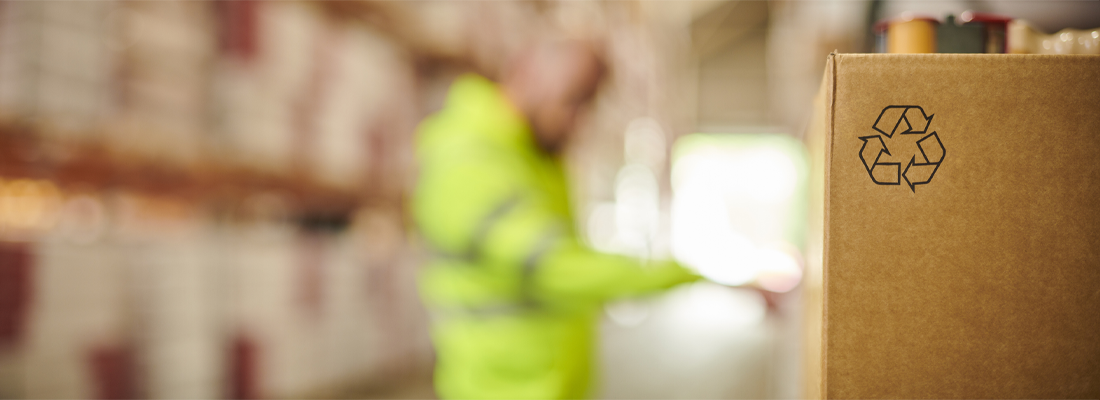Business benefits of obtaining an Ecolabel
The terms “sustainability” and “corporate social responsibility” have become significantly more important over the last few years. Companies and people in general are more aware of the effects of climate change. The amount of companies that are actively trying to become more eco-friendly is still rising, which is not surprising considering the positive impact it has on the environment and the companies themselves.
A good way to recognise a company that is eco-friendly, is their eco-label. This is an environmental performance certification handed out by organisations or government authorities to companies who have eco-friendly products or services, or an eco-friendly production process. An eco-label identifies products or services proven to be environmentally preferable overall.
What is eco labelling
The International Organisation for Standardisation (ISO) has identified three broad types of voluntary labels, with eco-labels fitting under type 1. This is a multiple-criteria based, third party programme that awards a license that authorises the use of environmental labels on products indicating overall environmental preferability. The criteria are based on the type of product or service, meaning they are different for every product category.
Although sustainability and eco-friendliness are getting more attention every year, not everyone is aware of the existence of eco-labels. In fact, many people are not even aware of the benefits that come with being eco-label certified. Consumers believe in the importance of companies that are publically stating their eco-friendliness. They can ask for insights in the production process of the companies they buy from. When operating accordingly to the eco-label, companies can provide these insights to their clients. This makes the buying and selling process much easier for both parties.
The decision of companies to be more eco-friendly is completely voluntary, but the companies that are actively trying to become more eco-friendly are aware of the benefits. They know, for example, that being eco-friendly also means being cost-efficient. And although more companies become aware of these benefits every year, this group is still a minority. The number of organisations that still use fossil fuels is significantly high. This is surprising, considering fossil fuels are the primary contributors to global warming and climate change. When these fuels are burned, they release carbon dioxide and other greenhouse gases like methane and nitrous oxide, which in turn trap heat in our atmosphere.
No matter the method of analysis, the selection of criteria for eco-labels is a complicated task. Each program that is using a life-cycle review is doing it in a different way. Given that there are no standard criteria that must be included, each eco-label faces the problem of selection with a limited number of attributes. Another concern is the need to compare products with different kinds of impact.
What are the advantages of being eco-label certified
Companies that publicly state their sustainable, eco-friendly policy and the fact that they are eco-label certified, automatically contribute to creating more awareness for ecolabelling. Many eco-labels have also done a great deal to raise awareness and to create trust, to change what we expect from certain product categories, and to build capacity and create a common framework around sustainability. Consider the success of the Fairtrade movement in the UK, where sales of Fairtrade products topped £1bn in 2010. The number of eco-labels in South America have been growing significantly over the past few years. In Argentina, for instance, the number of eco-labels that were founded by independent organisations, has been increasing every year since 2010. However, creating awareness for eco-labels seems to be a problem in South America. There still is a huge amount of companies on the continent that score below average on sustainability. So, the question remains: how can ecolabelling create more awareness for a company’s impact on the environment? And how does the sustainability model need to evolve to accelerate more sustainable modes of consumption as 7 billion people bump up against the limits of the planet's natural resources?
As said before, the criteria for awarding an eco-label is different for every label. For now, we will use the EU Ecolabel for some examples. A good example is a criterion for indoor cleaning services. Article 2 says the following about this: “routine professional cleaning services means professional cleaning services that are provided at least once a month, with the exception of glass cleaning which shall be considered as routine where it is performed at least once every three months”. This is a small detail, but good to keep in mind when submitting a similar product or service for the EU Ecolabel. Another criterion for hard surface cleaning products states that the total amount of volatile organic compounds is below the set limits. Volatile organic compounds are organic chemicals that have a high vapour pressure at ordinary room temperature. Some VOCs are dangerous to human health or could cause harm to the environment, including climate change and smog. This makes the criterion about VOC limits one of the most important criteria for all eco-labels.
Cradle to Cradle completes the cycle
Another good example is the Cradle to Cradle (C2C) label, which is based on the concept of circular economy. Taking cleaning detergents as reference, following the criteria of C2C, the ingredients must derive from organic sources and be completely degradable after the usage. Also the packaging must be produced by recycled materials, such as old plastics. In doing so, C2C makes sure that human commercial activities will no more harm the nature and rather remain the biological and technical circle. In the practice, some pioneers in the cleaning industry tend to combine EU Ecolabel and Cradle to Cradle to become both efficient and effective from economic and ecological perspectives.
"We should finally change our mind set and start doing the right things right, instead of merely focusing on profit and efficiency, which may lead us to the dead end. Combining Cradle to Cradle with EU Ecolabel standards will be the only solution for the cleaning industry to prosper in a sustainable way. - Xiaoming Bai, International Marketing Director of Werner & Mertz
Eco-labels: A sustainable answer for the industry
The commitment to clear objectives has been critical to the success of ecolabelling programs around the world. While eco-labels may express them differently, three core objectives are generally pursued:
1. Protecting the environment
The protection and conservation of the environment is generally a primary objective. Ecolabelling programs are used to influence consumer decisions and encourage the production and consumption of environmentally preferable goods and the use of environmentally preferable services.
2. Encouraging innovation
Through the awarding and promotion of eco-labels, ecolabelling programs offer a market incentive to environmentally innovative and progressive businesses. By offering products or services that reduce stress on the environment, the businesses can establish a positive image among consumers, thereby creating an advantage. Most ecolabelling programs gradually raise their standards, to keep companies eager to become more innovative over time.
3. Building awareness of environmental issues
Lastly, ecolabelling programs can also serve to raise consumer awareness of environmental issues and the consequences of their choices for the environment. In countries where there is a high degree of consumer awareness, a trusted eco-label that provides reliable information on the environmental impacts of products in the marketplace may be all that is required to promote the selection of eco-label certified products. In countries where the concern for environmental issues is not very high, ecolabelling can be used to promote environmentally beneficial actions.
The participation of multiple stakeholders is also an essential aspect of any ecolabelling program’s impact and success. Of course, every eco-label is different, but most labels involve the participation of the following groups:
Consumers
Consumer demand always generates market impact. Their preferences are to be determined and reflected in different eco-label initiatives.
Industry
The awareness and involvement of the industry and the commercial sector are essential to the success of any ecolabelling program. The criteria for licensing and certification must be practical in the market. The industry represents product producers, service providers and procurers.
Government
Many eco-labels are funded by government departments. They provide input in program development, management and delivery areas.
Receive industry news in your inbox
Ultimately, eco-labels strive to stimulate sustainable behaviour. Consumers or producers cannot be expected to do the right thing, unless they know what that is. Eco-labels can do the right thing by focusing on this need and creating clear criteria– as are the global companies who are pushing to make effective use of them. In the newsletter we will continue to talk about new sustainable business opportunities.
Share your stories with us!
Do you have an innovation or interesting news you would like to share with the professional cleaning and hygiene industry? The Interclean website and social media channels are a great platform to showcase your stories!
Please contact our press department interclean@rai.nl.
Are you an Interclean exhibitor?
Make sure you add your latest press releases to your Company Profile in the Exhibitor Portal for free exposure.
Receive the best newsletter on cleaning & hygiene - straight to your inbox!
We promise never to send you spam and you can unsubscribe at any time!





